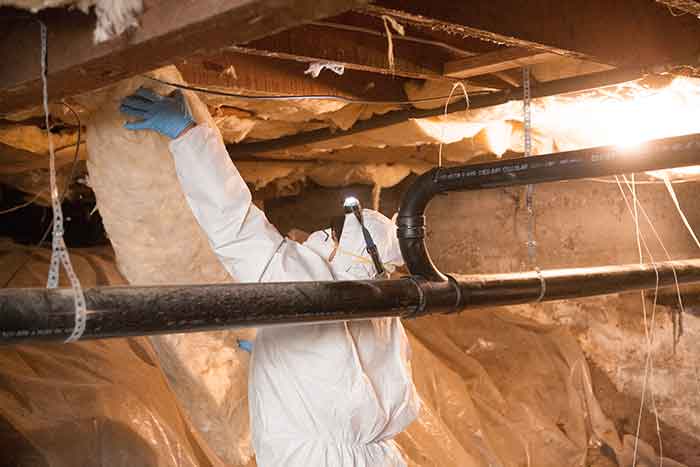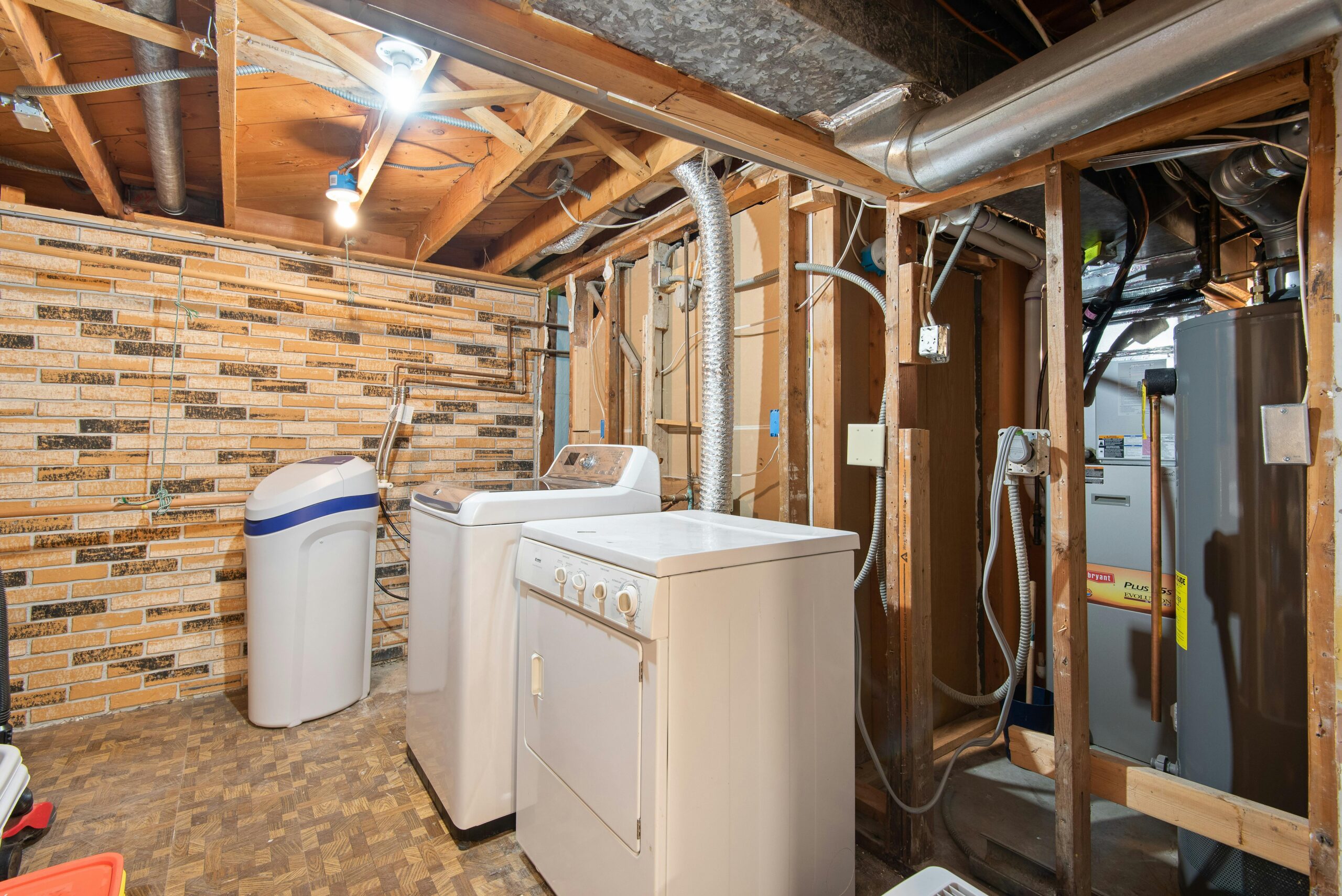When to Get an Insulation Replacement
The insulation in your crawl space can only last so long before it needs to be replaced. Know the signs of insulation replacement before it’s too late.
Of all the ways to make a home energy efficient, insulating is number 1. Insulation stops outside air from coming into your home. Thus, your heat and air system doesn’t need to work as hard to maintain the temperature inside.
Most of us know about insulating walls and windows to seal a home. But what about attics and crawl spaces? Crawl space insulation is just as vital to an energy-efficient home as any other space.
Without proper insulation in your crawl space, you lose your heated or cooled air through the floor. A home can have two types of crawl spaces, ventilated or unventilated.
Each requires a particular form of insulation. As a home ages, insulation replacement is in order. This applies to crawl spaces just as it does to walls, windows, and attics.
Next, are seven signs that you may need crawl space insulation replacement sooner than later.
1. Higher Energy Bills
The most definite sign of poor insulation is your utility bills. You don’t have to shine a light in your crawl space to know when outdoor temperatures find their way into your home.
When they do, your heating and air work overtime to compensate. The result is a rising energy bill.
Likewise, the heated or cooled are escapes, too. In the summer, you’re losing some of the cooled air your air conditioner is working so hard to generate.
The same goes for the winter. Crawl space problems and poor attic insulation could be the culprits.
Let’s say you reinsulated your walls and windows in the recent past. If your energy bills are still too high, it’s time to consider checking your crawl space insulation.
Poor or missing insulation in your attic and crawl spaces are the likely cause.
2. Indoor Temperatures Are Changing
Along with high energy bills, homeowners often find that the indoor temperature of the home does not remain constant. If the temperatures change with the time of day or weather, you have an insulation issue in your crawl space.
Over time, insulation shifts and creates unprotected areas. Outside air finds its way in and undermines your heating and cooling system.
Adding insulation may take care of the problem. Other times, the insulation itself has degraded or does not meet modern construction codes. In those cases, replacing insulation altogether is the best solution.
3. Evidence of Animal Infestation
Critters of all kinds take advantage of attics and crawl spaces once they discover them. If you have found traces of rats, mice, squirrels, or opossums in your crawl space, take heed.
Bats and snakes may even take up residence in either your attic or crawl space. Once they find a home in your home, it’s time to evict them.
Then, it’s time to change the bad insulation. In addition to leaving dirt and feces in your current insulation, they will choose to have their offspring there as well.
4. Signs of Wet Insulation
If insulation becomes wet or even damp or moist, there’s no saving it. You’ll have to remove and replace it.
Mold and Mildew
Wet insulation leads to mold and mildew, which leads to poor air quality. Mold releases something called mycotoxins that are quite dangerous. Mold spores in your insulation present a health hazard for you and your family.
Even as the insulation dries out, the spores remain a problem. They become airborne and travel to other areas of your home. If this is your current situation, it’s time to replace your insulation.
If you catch it early enough, you may only need to replace the affected areas. If you had a recent leak in plumbing, be sure to check the surrounding insulation. You might be able to sanitize the area in time, or partially replace the insulation.
Moisture and Insulation Effectiveness
More often than not, though, replacement is the safest and most efficient option in the long run. When you have roof leaks, blocked vents, or flooding in the basement, your insulation can be compromised.
Even the absence of proper vapor barriers can cause moisture to build up in insulation. In addition, moisture makes the insulation ineffective in its job.
Insulation works by way of small air pockets that trap air and maintain the temperature. When water plugs those holes, the insulation no longer works. If the insulation is not doing its job, then it’s time to replace it.
5. Indoor Drafts
Poor insulation leads to drafts in the home. Attic insulation is the more common culprit. Though, crawl spaces can send draft up through the floor. Do you require slippers around the house all winter? If so, drafts are chilling your floors and feet.
Cold drafts make their way in when there is not enough blockage in your insulation. You notice cold drafts more in the winter. Though, warm air seeps in during the summer as well.
Adding insulation to the crawl space ceiling can seal those drafts.
6. Settling and Compacting Over Time
Insulation keeps its shape for several years to several decades. Though, time gets to everything. And insulation settles as the years go on.
As it settles, the thickness drops. The material weakens, which is known as settling and compacting. Often you can add insulation to it to bolster it back up.
Other times, replacement is in order. A professional can take a look through your crawl spaces and make a recommendation.
7. Outdated Insulation Materials
As older insulation material breaks down, it loses thickness. Other times, it becomes merely outdates as building codes change.
Older insulation is no longer thick enough to do an adequate job. Before the government began regulating in earnest, builders often added the minimum amount of insulation. Sometimes, a few inches was all that ended up in the walls.
Read more about why an insulated and sealed crawl space protects your home.
Measuring R-value
These days, the U.S. Dept. of Energy has minimum requirements for insulation material. Those requirements vary according to the area of the country in which the home is built.
If your home heats up too quickly in the warmer months, you need more insulation.
It’s a good idea to have an insulation professional come into your home to measure the R-value of your current insulation. R-value is a measurement of how well a given material resists heat.
If it falls below the current requirements, consider re-insulating your home, including the crawl space.
Decayed Material
If your home is several decades old, there’s a good chance that your insulation has decayed. Older insulation contains old materials made of cotton and wool. We now know those materials decay over time.
They have a far shorter lifespan than the fiberglass in use today. In short, your insulation has quit. It is indeed time to replace it.
Is It Time for Insulation Replacement?
Insulation added to your crawl space can make your entire home more energy-efficient. If you suspect it’s time for insulation replacement, it’s also time to call a professional.
Even if you feel you can do the work yourself, first gather some quotes from professionals and consider if DIY crawl space insulation installation is worth it.
Again, an insulation company can send a representative to measure the R-value of your current insulation. They can also access your crawl space and make recommendations.
If you live in Oregon or Washington state, contact Crawl Pros today for a free estimate on insulation replacement. Our professional estimators can see you in as little as a day. Have questions? Give us a call at 866-673-9626.



